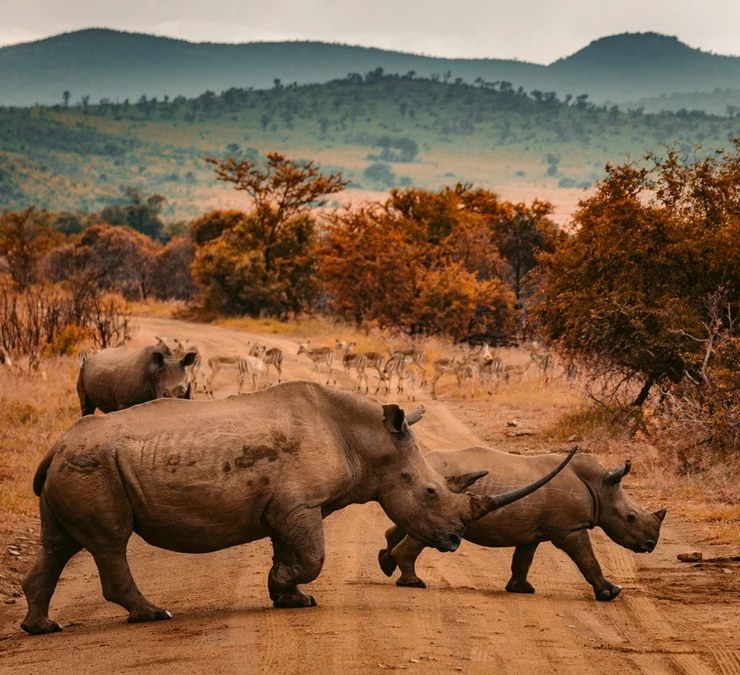- The effects of climate change and anthropogenic factors have adversely affected the availability of water for wildlife in Tanzania National Parks
- Africa is the second driest continent globally, and millions of Africans face water shortages
- Mkomazi National Park is one of the world’s largest and most ecologically essential networks of protected areas known as the Greater Tsavo Ecosystem.
Africa is the second driest continent globally, and millions of Africans face water shortages. But there is one point that we always miss! We talk about how important water is for humankind and the challenges we face with water security and forget that creatures in the wild are also feeling the same pressure, if not more. Clean water is critical for the survival of our species and every living creature on planet earth.
African Aqua Solutions (AAS) have for a long time been examining different ways to support our environment, our wildlife and those working towards protecting it.
AAS has come up with three products to reduce the impact of cost, time and security of water for both the black Rhinos under threat in Tanzania and the people devoted to their protection: The products include:
Read: AFRICA: Why Climate change Threatens transport systems
- LifeSaver- The LifeSaver Bottle allows you to use water from natural sources such as ponds, lakes and rivers to stay hydrated while protecting you from waterborne viruses or bacteria. The bottle can purify about 6,000 litres of water.
The Lifesaver bottle can purify about 6,000 litres of water. [Photo/Icon Lifesaver] - Purifaaya- Purifaaya’s range of filters is a carbon-negative product that directly contributes to the fight against deforestation.
- Portatank is a South African designed and manufactured, fully portable water storage solution capable of holding between 800 to 10,000 litres.
The effects of climate change and anthropogenic factors have adversely affected the availability of water for wildlife in Tanzania National Parks. The water shortage in these parks is consistently rising primarily because most water catchments are located outside the parks.
The Mkomazi Rhino Sanctuary within Mkomazi National Park in Tanzania lacks a permanent water supply. In the driest months, it faces particular challenges between July and October in ensuring that the Sanctuary black rhinos receive their required daily drinking water.
Rhinos also rely on wallowing in mud to protect themselves from sunburn and biting flies. In these dry months, a daily roundtrip of 90 kilometres (54 miles) by truck and bowser has to be made to provide the critical water supply for the rhino sanctuary.
A permanent water supply would significantly reduce overhead incurrences and support the preservation of this iconic and critically endangered species. Additionally, installing water points in and around the parks would also supply potable water to the rangers and villagers.
Read: Saving the Serengeti: Humans or Wildlife – Who Comes First?
Mkomazi National Park is one of the world’s largest and most ecologically essential networks of protected areas known as the Greater Tsavo Ecosystem. Some of Africa’s most stunning wildlife are found in the Mkomazi National Park.
The transboundary parks between the border of Kenya and Tanzania are a critical landscape for elephants, which migrate between Mkomazi in Tanzania to Tsavo West and other conservancies in Kenya. Without both sides protected, one of the world’s biodiversity strongholds lies at risk. Both Tanzania and Kenya have incredible national park systems with dedicated rangers on the ground to protect the wild animals.
AAS is in talks with TAWA to assist their scouts with clean water solutions for patrols, fly camps, and base camps. In February this year, the company participated in the Beach Cleaning Day with Love The Environment and Kiwi Media. AAS reduces fuel consumption related to moving water storage tanks through Africa.
Tanzania Wildlife Management Authority (TAWA) is under the Ministry of Natural Resources and Tourism. It is an autonomous public institution established by the Wildlife Conservation-The Tanzania Wildlife Management Authority- Establishment Order of 2014.
TAWA is responsible for administering sustainable management of wildlife resources and biodiversity conservation outside National Parks and the Ngorongoro Conservation Area. This entails managing a total area of 169,553 square kilometres (79 per cent of the total size of protected areas in the country) comprising Game Reserves, Game Controlled Areas and open areas.
Read: Investing in Wildlife Conservation in Kenya
